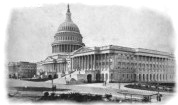Ceremony at the Crossroads

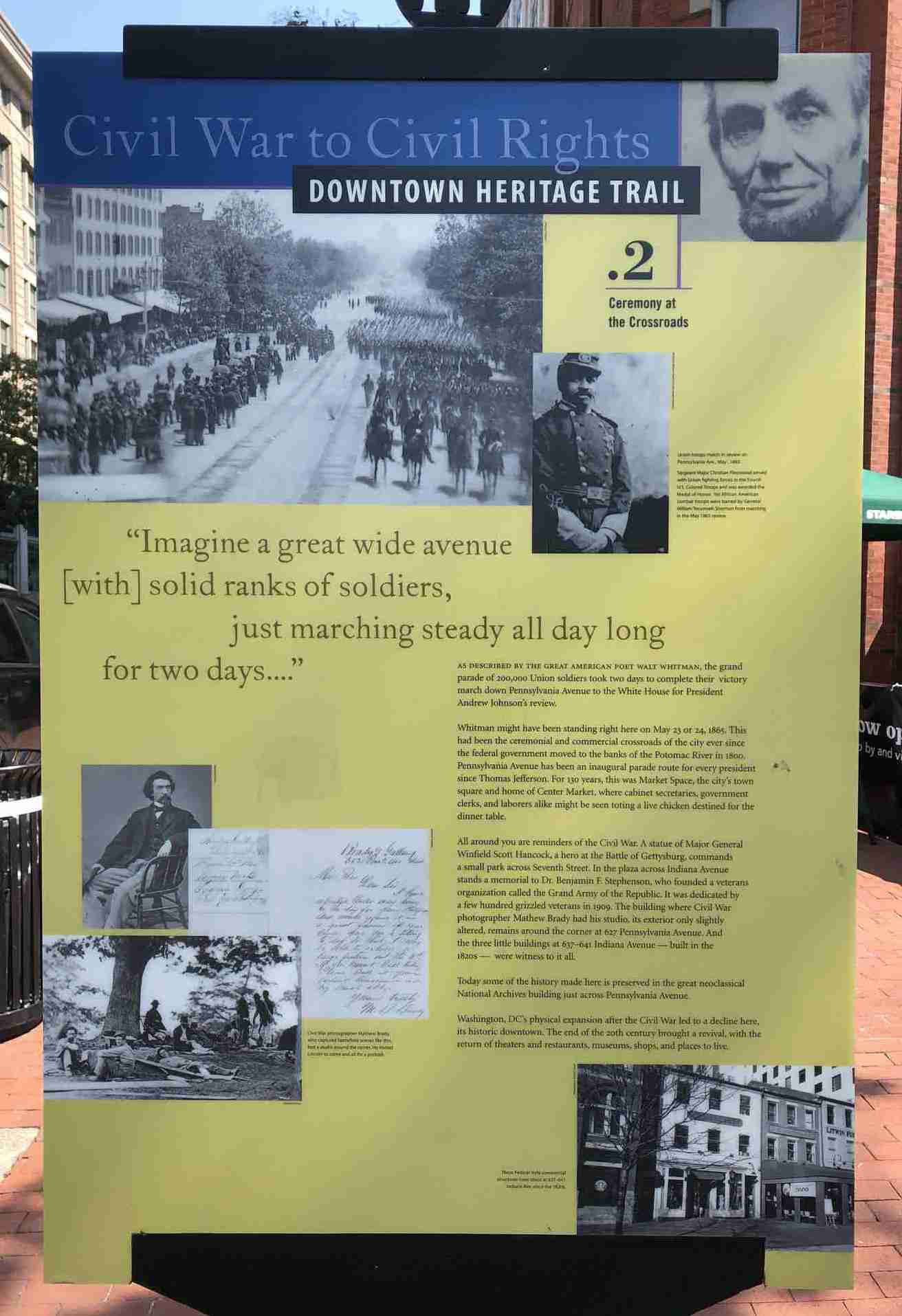
"Imagine a great avenue [with] solid ranks of soldiers, just marching steady all day long, for two days. ..." Walt Whitman.
It took two days for the grand parade of 200,000 victorious Union soldiers described by the great American poet and Civil War nurse Walt Whitman to march down Pennsylvania Avenue past this spot, headed for review by President Andrew Johnson at the White House.
Whitman might have been standing right here on May 23 or 24, 1865. This had been the ceremonial and commercial crossroads of the city since the federal government moved to the banks of the Potomac River in 1800. Pennsylvania Avenue has been an inaugural parade route for every President since Thomas Jefferson. For 130 years, this triangular space before you was the city's town square-home of the Center Market where Cabinet secretaries, government clerks and laborers alike might be seen with a live chicken under the arm.
All around you are reminders of the Civil War. A statue of Major General Winfield Scott Hancock, a hero at Gettysburg, commands a small park across Seventh Street. In the plaza across Indiana Avenue, stands a memorial to the founder of the Grand Army of the Republic, Dr. Benjamin F. Stephenson, dedicated by a few hundred grizzled veterans in 1909. The building where Civil War photographer Matthew Brady had his studio, its exterior only slightly altered, remains around the corner at 627 Pennsylvania Avenue. And the three little buildings at 637-641 Indiana Avenue were witness to it all.
Today, some of the history made here is preserved in the great neo-classical National Archives building just across Pennsylvania Avenue. Market Space is now the hub of a new downtown, alive with theaters and restaurants, a new sports arena, museums, shops and homes - a mixture of activities that reflects its historic role as the heart of the nations's capital.
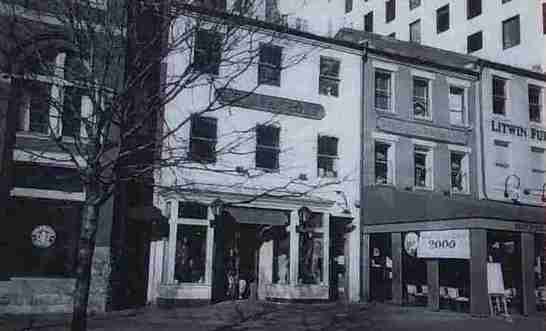
Federal style commercial structures have stood at 637-641 Indiana Avenue since the 1820s.
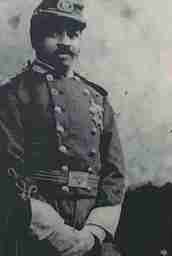
Sergeant Major Christian Fleetwood served with Union fighting forces in the Fourth U.S. Colored Troops and was awarded the Medal of Honor. Yet African American combat troops were barred by General William Tecumseh Sherman from marching in the May 1865 review. |
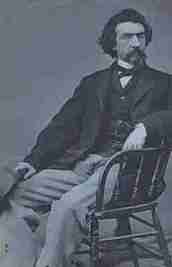
Civil War photographer Matthew Brady had a studio around the corner. |

